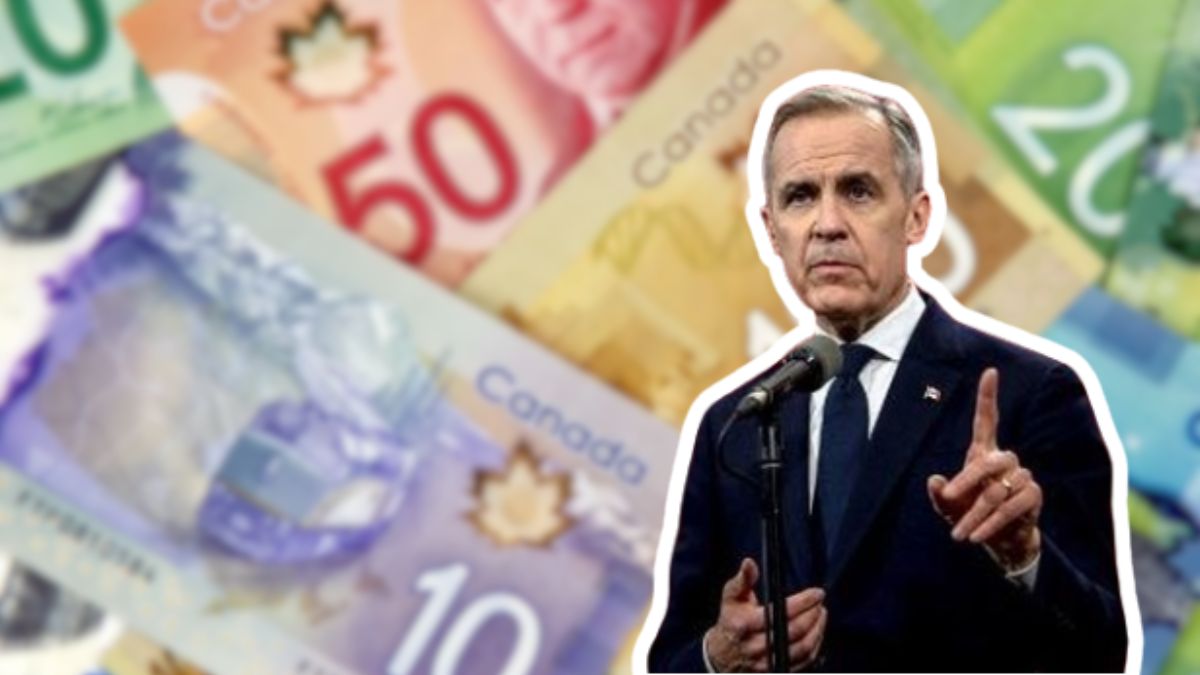As the cost of living continues to weigh heavily on households across Canada, relief is once again on the way. In August 2025, millions of Canadians are set to receive their quarterly Canada Carbon Rebate, officially known as the Climate Action Incentive Payment (CAIP).
This tax-free payment is part of the federal government’s broader carbon pricing system, designed to offset the rising costs associated with fuel and energy use while pushing the country toward its climate goals. For many families, the August rebate will be a welcome addition to monthly budgets stretched by groceries, utilities, and housing.
But while the payment is automatic, many Canadians are still asking: When will the money arrive, how much can I expect, and am I eligible? This detailed report provides province-by-province dates, eligibility requirements, estimated payment amounts, and what to do if your rebate doesn’t arrive on time.
What Is the Canada Carbon Rebate?
The Canada Carbon Rebate (CAIP) is a tax-free quarterly benefit issued by the Canada Revenue Agency (CRA). It is funded by revenues collected from the federal carbon pricing system, often called the carbon tax. Instead of the government keeping those revenues, they are redistributed directly to households to offset higher costs of fuel and heating.
This means the more carbon pricing revenues the federal government collects, the larger the pool of funds available for rebates. Importantly, the system is designed so that most households receive more back in rebates than they pay in carbon costs.
Key Features of CAIP:
- Automatic: No separate application is needed. Eligibility is based on your annual tax return.
- Tax-Free: Payments do not count as taxable income.
- Quarterly: Issued every January, April, July/August, and October.
- Province-Specific: Amounts vary depending on which province you live in, since federal carbon pricing applies differently across regions.
- Rural Bonus: Residents in rural areas receive a 10% supplement on top of their base payment.
August 2025 Payment Schedule
The CRA has confirmed that the next round of rebates will begin mid-August 2025. To ensure smooth distribution, payments are staggered by province.
| Province | Payment Date | Notes |
|---|---|---|
| Ontario | August 15, 2025 | Includes rural supplement where applicable. |
| Alberta | August 15, 2025 | One of the highest rebate amounts due to higher carbon revenues. |
| Manitoba | August 15, 2025 | Rural residents eligible for a 10% supplement. |
| Saskatchewan | August 15, 2025 | Applies to all tax-filing residents. |
| New Brunswick | August 16, 2025 | Newer addition to the federal carbon pricing system. |
| Nova Scotia | August 16, 2025 | Rebates adjusted for rural households. |
| Prince Edward Island | August 16, 2025 | Direct deposit strongly encouraged. |
| Newfoundland & Labrador | August 16, 2025 | Late filers may experience delays. |
Important: Quebec and British Columbia are not part of the federal rebate system. Both provinces operate their own carbon pricing and rebate programs.
Eligibility Rules
To qualify for the Canada Carbon Rebate August 2025, Canadians must meet the following requirements:
- Residency: You must live in an eligible province as of July 15, 2025.
- Tax Filing: You must have filed your 2024 income tax return, even if you had no income.
- Age: You must be 19 years or older. If under 19, you may still qualify if you are:
- A parent living with your child, or
- Married or in a common-law relationship.
- Accurate Records: Your banking, marital status, and address information must be current with the CRA.
There is no separate application process. Once you file taxes, the CRA automatically calculates eligibility and issues payments.
How Much Will You Get in August 2025?
The payment amount depends on family size, province of residence, and whether you live in a rural area.
Estimated Payment Ranges:
| Household Type | Urban Estimate | Rural Estimate |
|---|---|---|
| Single Adult | \$140 – \$180 | \$155 – \$200 |
| Couple with Two Children | \$280 – \$360 | \$320 – \$400 |
| Family of Four (Rural) | — | \$320 – \$400 |
These amounts are estimates. Actual payments vary by province, since the carbon tax revenues collected in each province are redistributed locally. Provinces with higher carbon use generally see larger average rebates.
Why Payments Differ by Province
The federal carbon pricing system applies only in provinces that do not have their own carbon tax framework. This means amounts are calculated based on:
- How much carbon revenue was collected in your province.
- Population size of your province (rebates are shared among residents).
- Rural supplement eligibility, which increases the payment by 10%.
This is why residents in provinces like Alberta and Saskatchewan often receive higher average rebates than those in Atlantic Canada.
What If You Haven’t Received Your Payment?
If your rebate doesn’t arrive by August 20, 2025, there are several steps to take:
- Check CRA My Account – Log in to confirm whether your payment was issued.
- Verify Tax Filing – Ensure your 2024 return has been filed and processed.
- Check Banking Info – Outdated direct deposit details or mailing addresses are the most common cause of delays.
- Contact CRA – If everything appears correct but no payment has arrived, call the CRA for assistance.
Delays are most common among:
- Late tax filers.
- Those who recently changed marital status or province of residence without updating CRA records.
- Households without direct deposit (cheques can take weeks longer).
Why the Rebate Matters in 2025
The Canada Carbon Rebate is not just about climate change—it’s also about financial fairness. By putting money directly into the hands of households, the federal government ensures that families can cope with rising costs while the economy transitions to cleaner energy.
For many households, the rebate arrives at a critical time:
- August coincides with back-to-school shopping, when parents face big expenses for supplies, clothes, and extracurricular activities.
- Higher summer utility bills, especially with air conditioning, strain budgets.
- Rising grocery and fuel prices continue to be major sources of household stress.
The August 2025 rebate will provide much-needed breathing room.
The Bigger Picture: Climate Goals and Household Relief
The carbon rebate system is part of Canada’s commitment to reduce emissions while avoiding disproportionate financial pressure on households. By taxing carbon-intensive fuel and redistributing revenues:
- Households are compensated for higher costs.
- Consumers are encouraged to adopt cleaner choices (energy-efficient appliances, EVs, etc.).
- The system remains WTO-compliant and aligned with international climate agreements.
Critics argue that rebates may not fully offset inflationary impacts, but multiple studies have shown that most low- and middle-income families receive more in rebates than they pay in carbon costs.
Key Takeaways for August 2025
- Payments begin August 15–16, 2025, depending on your province.
- Eligibility is automatic if you filed your 2024 taxes and live in a qualifying province.
- Amounts vary by province, family size, and rural status, but single adults can expect around \$140–\$180, while families of four may see \$320–\$400.
- Direct deposit is the fastest way to receive funds.
- Quebec and BC residents are excluded because their provinces manage their own systems.
5 Relevant SEO-Friendly FAQs
Q1: When will the Canada Carbon Rebate be paid in August 2025?
Payments will be issued on August 15, 2025 (Ontario, Alberta, Manitoba, Saskatchewan) and August 16, 2025 (Atlantic provinces).
Q2: Who qualifies for the August 2025 carbon rebate?
Anyone living in an eligible province on July 15, 2025, who has filed their 2024 tax return, and meets age or caregiver requirements.
Q3: How much is the rebate worth?
Amounts vary, but single adults can receive \$140–\$180, while families of four may receive up to \$400 (with rural supplements included).
Q4: What if my payment hasn’t arrived by August 20, 2025?
Check CRA My Account, confirm your tax filing, verify banking details, and contact the CRA if needed.
Q5: Do Quebec and BC residents get the federal rebate?
No. Both provinces have their own provincial carbon pricing and rebate programs.








